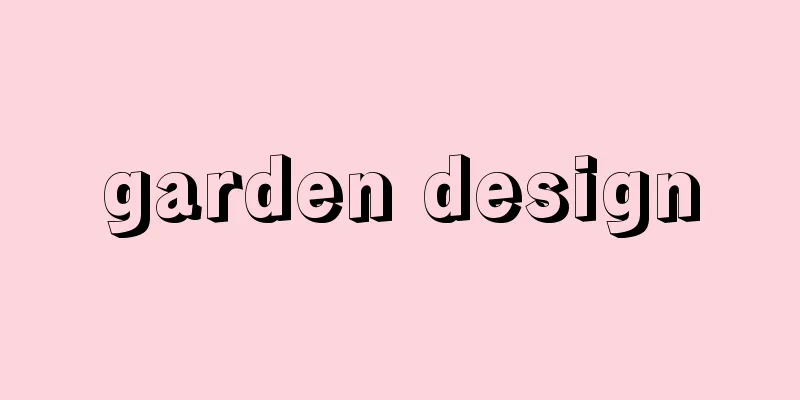Mandarin ducks - Mandarin ducks

〘Noun〙① A water bird of the Anatidae family. Approximately 45 centimeters in length. The male is beautiful, with a ginkgo leaf-shaped feather called an omoiba on its back. The female is generally a dull color, with a dark brown back. In summer, the male turns almost the same color as the female. They live in groups in rivers and lakes, and in summer they build nests in tree caves deep in the mountains to lay eggs. They are found in southeastern Siberia, China, Japan, etc. On. Oshi. En'ou. [Season: Winter] *Man'yoshu (late 8th century) 11.2491 "In the morning, when I sleep in love with my sister, a male bird of prey passes by here , and I wonder if my sister is sending me away."② A word used to describe the loving and intimate state of a husband and wife or a man and woman. ※Joruri Hiragana Seisui-ki (1739) 3 "I am a mandarin duck, sad to part from its mate"③ A type of topknot . (i) A topknot where the hair is parted on the left and right, and tied like a sash over the hairpin . In the early modern period, this style was worn by town girls, and the name comes from the fact that the style resembles a mandarin duck. It also refers to the same style of wig worn by female actors in Kamigata Kyogen, such as Osome and Onatsu. ※Azuma Yoha (1885) (edited by Okamoto Konseki) 1 "Mandarin ducks: Before the Meiji Restoration, people would sometimes wear this style of hairstyle, but now it has fallen into disuse." (ii) A type of hairstyle for men. ※Sakehon Shikake Bunko (1791) 1 "The style of hair that is worn in this way is the smallest."④ A grade of B in academics. [New Era Terminology Dictionary (1930)] [Glossary] In waka poetry, the form "shi" is more often used than "shidori," and it is also used as an introductory word leading to the homophonic "oshishi" or as a pun with "oshishi." Since the poem "Shi two are there" was written in the "Shoki - Kayo," it has generally been used as an analogy for a happy relationship between a man and a woman, based on the understanding that "mandarin ducks, one bird" [Shijing - Xiaoya - Mandarin ducks - Mao Zhuan].Oshishi [mandarin duck]En-ou En-au [mandarin duck]Source: The Selected Edition of the Japanese Language Dictionary About the Selected Edition of the Japanese Language Dictionary Information |
〘名〙① カモ科の水鳥。全長約四五センチメートル。雄は美しく、背に思羽(おもいば)と呼ばれるイチョウの葉のような形をした羽がある。雌は全体に地味な色で、背部は暗褐色。雄も夏には雌とほとんど同じ色になる。川や湖水などに群をなしてすみ、夏は深山の木のほら穴などに巣をつくって産卵する。シベリア東南部、中国、日本などに分布する。おん。おし。えんおう。《季・冬》※万葉(8C後)一一・二四九一「妹に恋ひ寝(いね)ぬ朝明(あさけ)に男為鳥(ヲシどり)の此ゆかく渡る妹が使か」② 夫婦や男女の仲むつまじいようすにいう語。※浄瑠璃・平仮名盛衰記(1739)三「我は名残もおし鳥の、つがひ離るる憂き思ひ」③ 髷(まげ)の一種。(イ) 髪を左右に分け、笄(こうがい)の上にたすきを掛けたように結ったもの。近世、町娘などが結ったもので、結い上げた髪形がオシドリに似ているところからいう。また歌舞伎で、お染、お夏など上方狂言の娘形のかつらとして用いる同型のものをいう。※吾妻余波(1885)〈岡本昆石編〉一「鴛鴦(ヲシドリ)維新前に折々此風に結者みえしが方今廃れり」(ロ) 男の髪の結い方の一種という。※洒落本・仕懸文庫(1791)一「髪の風はをしどりといふやつもっとも小びたゐあり」④ 学科の成績で乙のこと。〔新時代用語辞典(1930)〕[語誌]和歌では「をしどり」より「をし」の形で使われることが多く、同音の「惜し」を導く序詞もしくは「惜し」との掛詞としても用いられる。「書紀‐歌謡」に「をし二つ居て」と詠まれて以来、一般には「鴛鴦、匹鳥」〔詩経‐小雅・鴛鴦・毛伝〕の理解に基づき、雌雄仲の良いたとえとして用いられた。
おし をし【鴛鴦】えん‐おう ヱンアウ【鴛鴦】出典 精選版 日本国語大辞典精選版 日本国語大辞典について 情報 |
Recommend
Dynasty stories
A type of script for Bunraku puppet theatre and Ka...
Function elements
...One is an alternative name for a (single-value...
Medōn (English spelling)
…The inhabitants of the collapsed kingdoms migrat...
Bulkhead - Kakuheki (English spelling)
Generally, it means a partition wall, but in mari...
Euler angle - Euler angle
When discussing rotational motion, these are the t...
School extension - gakkoukaihou (English)
The opening of school facilities and educational ...
Blut und Eisen (English spelling) Blut und Eisen
...the name given to Bismarck's policy of Ger...
Pilobolus
A zygomycete fungus of the Mucoraceae family that ...
Oil stain
Stains are dyes or pigments. Depending on the type...
Mockingbird (Mock Thrush) - Mockingbird (English spelling)
A species of bird in the passerine family Mimus, o...
Croatia - Republic of Croatia (English spelling)
A republic located in the Balkan Peninsula in sou...
Prince Oama
⇒ Emperor Tenmu Source: About Shogakukan Digital D...
UHF - UHF
Abbreviation for ultra high frequency. One of the...
Akumaku Culture
...Surveys by JL Giddings and DD Anderson identif...
Time sharing processing - Time sharing processing
The name of a system in which multiple users simul...









